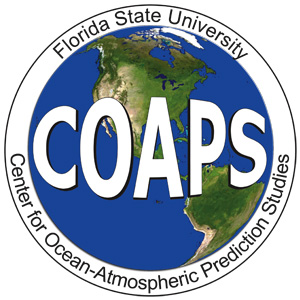Project done in collaboration with Benoit Vanniere and Alexandra Bozec.

Introduction
This work has begun with Benoit Vanniere, student in the reknown French ENS school.
Objectives of the Research
Validate the tidal implementation in HYCOM.
Quantify the loss of energy in that basin by the tidal conversion mechanism (barotropic tides converting into baroclinic one)
Abstract
This study focuses on modeling the tidal dynamics in the Gulf of Mexico using the HYbrid Coordinate Ocean Model (HYCOM). Numerical experiment have been conducted assuming a barotropic and a baroclinic ocean with 1/25° resolution. These simulations considered only 2 constituents: a semi-diurnal, M2, and a diurnal, O1. The reuslts are compared to those of the Navy Coastal Ocean Model (Gouillon, 2008) and an assimilative model, Khanta (1997). The agreement of tidal phases and amplitudes and of tidal energy fluxes at the entrance of the domain, validates the ability of HYCOM to simulate tides in the Gulf of Mexico. The generation of internal waves in the Gulf of Mexico using HYCOM shows that it exists a tidal conversion process from barotropic to baroclinic modes and suggest that a potentially significant loss of tidal energy could occur locally through diapyncal test mixing.
Poster presented at the 3rd Oceanography Symposium (5 Mb ppt file)
A peer review paper is in preparation
Presentation of very preliminary results given at COAPS (1.4 Mb ppt file)
Movies


For better quality movies or any questions related, please contact me
Quicktime
The Research Team
Dr. Eric Chassignet , COAPS director
Dr. A. Bozec , Post-Doc Scientist
F. Gouillon , Graduate Research Assistant
B. Vanniere, Summer Intern
Home
"Mistakes are the portals of discovery"... J. Joyce
Center for Ocean Atmospheric Prediction Studies
Florida State University
200 R.M. Johnson Bldg, Tallahassee, FL, 32306-2840
contact me